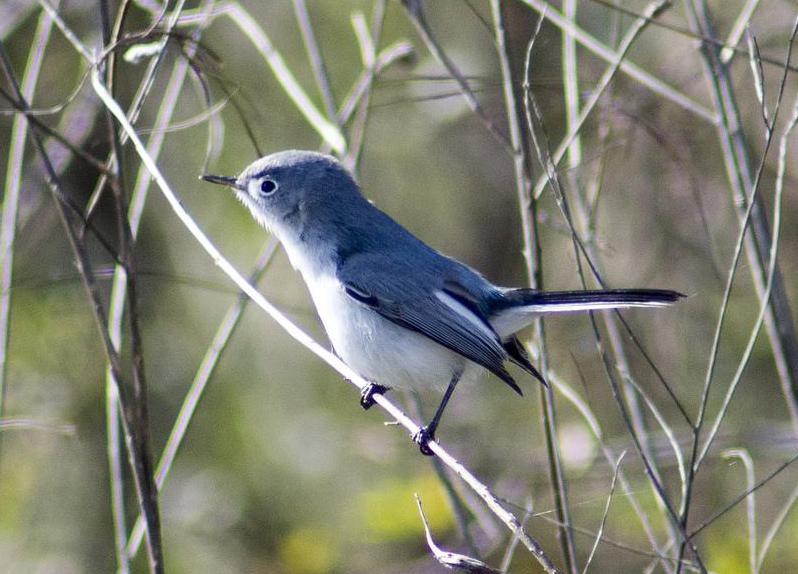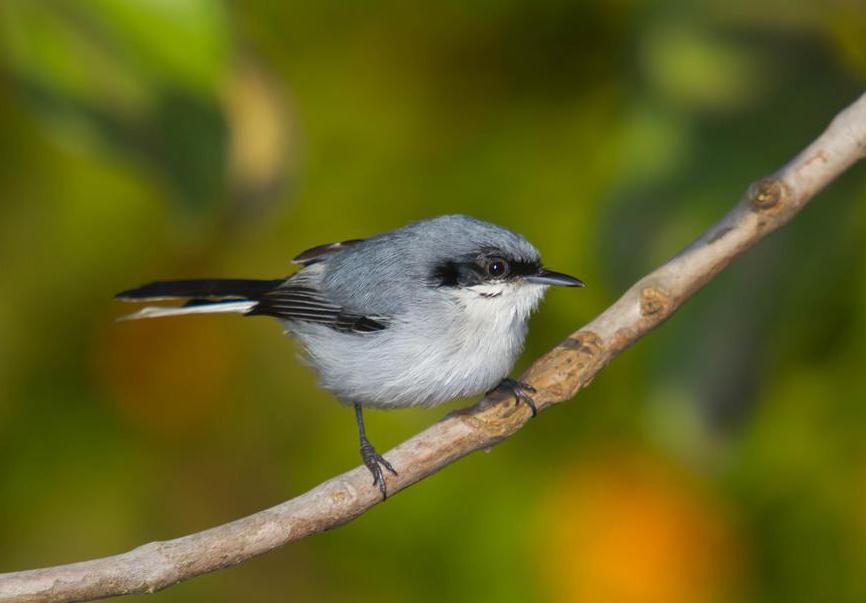At AllThingsNature, we're committed to delivering accurate, trustworthy information. Our expert-authored content is rigorously fact-checked and sourced from credible authorities. Discover how we uphold the highest standards in providing you with reliable knowledge.
What is a Gnatcatcher?
A gnatcatcher is a songbird that usually is bluish gray in color and has a long sharp bill that is used for eating insects. These small birds also have long cocked tails with white tips. Most males have a black cap on their head during mating season. The colors may vary depending on the species, but this variance typically is slight in nature.
There are 15 to 20 different species of this passerine bird. Examples include the Blue-gray, Black-tailed, Black-capped, and White-lored. Most of these small tropical and subtropical birds can be found in North and South America year-round. While the Blue-gray resides in both the United States (US) and Canada, it typically migrates south for the winter.

Gnatcatchers, family Polioptilidae, are closely related to the wren. These insectivorous birds are a cross between Old World warblers and the wrens when it comes to their habits and bodily structures. They like to move through foliage to hunt for insects, such as spiders, beetles, arthropods and leafhoppers.
Typically, gnatcatchers prefer to live in forests that have thick undergrowth and where it is humid. Some species enjoy habitats that range from dry scrub areas to humid canopies of the Amazon rain forest. The North American species generally likes trees and bushes to nest in. Most of the breeding behaviors of the Neotropical species are still unknown.
In 2005, a new species was discovered. The Iquitos Gnatcatcher, Polioptila clementsi, is highly endangered. It is considered by the scientific community to be a member of the Guianan Gnatcatcher family.

Like the Iquitos Gnatcatcher, the northernmost subspecies is considered threatened in California under the Endangered Species Act. California legislation initiated the Natural Community Conservation Planning (NCCP) program, which helps to protect the California Gnatcatcher and other species. NCCP plans have helped to conserve more than 36,279 coastal, sage-scrub habitats for the birds.

Since 2000, the US Fish and Wildlife Service (USFWS) has helped to designate 13 critical habitats for the gnatcatchers with most being on private land. This helps researchers learn more about the gnatcatcher species so that more of their habitat can be saved. Both the Endangered Species Act and the Audubon’s Important Bird Area Program have helped to restore habitats previously lost to the gnatcatcher.
Frequently Asked Questions
What exactly is a gnatcatcher?
A gnatcatcher is a small bird belonging to the family Polioptilidae. These diminutive, insectivorous birds are known for their active foraging behavior, often seen flitting about in search of small insects like gnats, which is how they get their name. They are characterized by their slender bodies, long tails, and distinctive calls.
Where can gnatcatchers be found?
Gnatcatchers are primarily found in the Americas, with their range extending from Canada to Argentina. The Blue-gray Gnatcatcher, for example, is widespread across North America during the breeding season and migrates to Central America in winter. Their habitats include woodlands, scrublands, and forest edges.
What do gnatcatchers eat?
Gnatcatchers primarily feed on small insects and arthropods, such as gnats, flies, spiders, and caterpillars. Their diet makes them beneficial for controlling insect populations. They actively forage in trees and shrubs, adeptly gleaning insects from foliage with their sharp, thin bills.
How do gnatcatchers build their nests?
Gnatcatchers construct their nests with fine plant materials, spider webs, and lichens, creating a small, cup-shaped structure typically placed in a tree or shrub. The use of lichens and other materials helps camouflage the nest, providing protection from predators. Both male and female gnatcatchers participate in nest building.
Are gnatcatchers endangered?
Most gnatcatcher species are not currently considered endangered. However, habitat loss and fragmentation can pose threats to certain populations. Conservation efforts are important to maintain healthy ecosystems that support these and other bird species. Monitoring by organizations like the Audubon Society helps track their status and promote conservation actions.
What is the mating behavior of gnatcatchers?
Gnatcatchers are generally monogamous, with pairs forming strong bonds during the breeding season. They engage in courtship displays that include vocalizations and aerial maneuvers. After mating, both parents share responsibilities such as incubating eggs and feeding the young, showcasing a cooperative approach to raising their offspring.
AS FEATURED ON:
AS FEATURED ON:













Discuss this Article
Post your comments